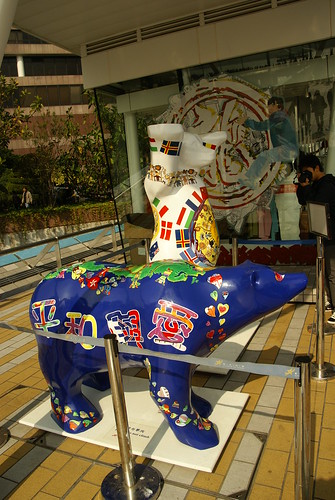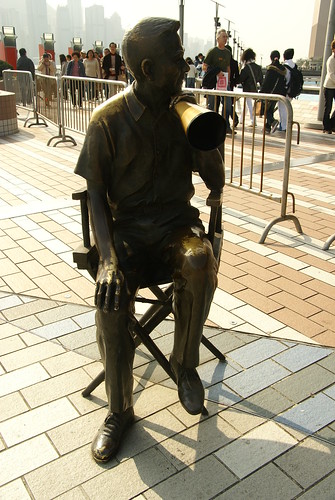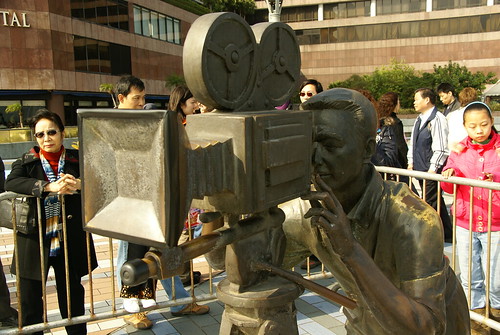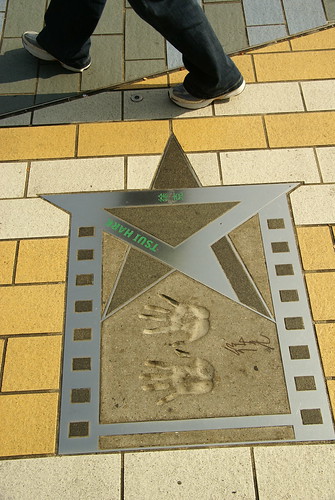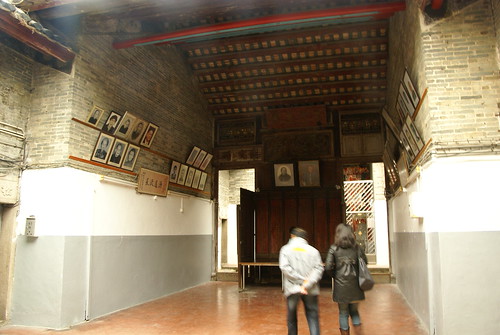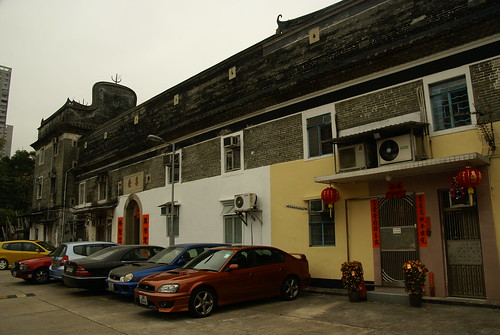這個影片雖然有點過時了,是共和黨的前副總統候選人潘林幹譙果蠅研究的影片。我原本以為潘林是在幹譙我們這些從事不實用的果蠅的科學家,後來才知道她幹譙的是法國從事果實蠅研究的科學家。基本上,幹譙我們這些做基礎研究的科學家,已經夠愚蠢了,可是她居然還更愚蠢一百倍不止。
在英文Fruit Fly指的可以是Drosophila屬的果蠅,也可以指Tephritidae科的果實蠅,兩者大不同,前者是對農業是無害的,後者則是很恐怖的害蟲。單單在加州,每年因地中海果實蠅危害造成的損失就超過12億美元,世界各國都把果實蠅害蟲的檢疫列為重點,嚴格禁止闖關輸入。所以,研究果蠅,可能對人類福祉毫無作為,可是研究果實蠅,卻是對農業和經濟有很大的幫助的。小賤潘連這點都搞不清楚,如果小賤肯當選了,美國還有未來嗎?
還好,美國終於有一位有為的總統上台了。在他的就職演說中,歐巴馬就明確地指出,他要把科學研究當為施政優先。歐巴馬上任百日,證實他大多數情況下,並未食言。他很快地解除了小布希政府對聯邦經費贊助幹細胞研究的限制,也承諾把GDP的3%應用在科學研發,並且把科研經費在十年內成倍增長,也把刺激經濟的聯邦預算花好一部分在替代能源的研究。在4/27的美國國家科學院年度院會暨新科院士當選日,他明確地表示對科學界的支持,希望他能夠為科學界再度帶來曙光!
相關新聞報導:
歐巴馬:GDP3%以上 用於科學研發
【世界日報╱編譯中心綜合華盛頓27日電】
歐巴馬總統27日誓言對美國的科學創新做歷來規模最大的投資,計劃把國內生產總值(GDP)的3%以上(超過4200億元),用於科學研發,使美國重登科技巔峰。他說,美國已落後其他國家,必須迎頭趕上。
歐巴馬在國家科學院(National Academy of Sciences)年會發表演說,揭示他雄心勃勃的科技計畫。他說,他提出的重大投資計畫將導致科技突破,讓太陽能電池像油漆一樣便宜,建造出能夠自行生產能源的「綠色大樓」。
他說:「本人相信,美國人的本色不是跟在別人後面,而是領導。現在正是我們再度領導的時刻。本人在此立下目標:我們將把GDP的3%以上,用於科學研發。」
他說:「我們不僅要達到(美、蘇)太空競賽高潮時期獲致的科技水準,更要超越。半世紀前追求新發現的努力,助長美國的繁榮與成功。本人今天所做的承諾,將推動今後50年的成功。這項工作將從我們對基礎科學和應用研究的歷史性承諾開始。」
歐巴馬舉出他希望達成的許多願望:教學軟體像私人教師授課一樣有效;先進的義肢讓患者能夠彈鋼琴;擴大人類的知識領域,讓人類對自己和周圍的世界有更透徹的了解。他強調:「我們一定可以做到(We can do this)。」這句話引起全場的掌聲。
他說,聯邦政府將把科學有關機構的預算增加一倍,包括國家科學基金會(National Science Foundation)、能源部科學署、國家標準科技學院(National Institute of Standards and Technology,NIST)。
儘管經濟前景不明,又遭逢豬流感帶來上任以來第一個全球重大公共衛生危機,一心要扭轉布希總統意識形態主導政策的歐巴馬,大聲疾呼提升科技。
他說:「在此艱困時刻,有些人說,我們負擔不起科學投資,目前是需要決定一切的時刻,支持科學研發,有點奢侈。本人絕不同意這種看法。國的繁榮、安全、保健、環保及生活品質,從未像現在這麼重要。」
【2009/04/28 世界日報】
歐巴馬演說部分原文重點節錄:
"I am here today to set this goal: we will devote more than three percent of our GDP to research and development. We will not just meet, but we will exceed the level achieved at the height of the Space Race, through policies that invest in basic and applied research, create new incentives for private innovation, promote breakthroughs in energy and medicine, and improve education in math and science."
"This work begins with an historic commitment to basic science and applied research, from the labs of renowned universities to the proving grounds of innovative companies."
"Second, in no area will innovation be more important than in the development of new technologies to produce, use, and save energy."
"Third, in order to lead in the global economy and ensure that our businesses can grow and innovate, and our families can thrive we must address the shortcomings of our health care system."
"The Recovery Act will support the long overdue step of computerizing America's medical records, to reduce the duplication, waste, and errors that cost billions of dollars and thousands of lives. But it's important to note: these records also hold the potential of offering patients the chance to be more active participants in prevention and treatment. We must maintain patient control over these records and respect their privacy. At the same time, however, we have the opportunity to offer billions and billions of anonymous data points to medical researchers who may find in this information evidence that can help us better understand disease."
"Fourth, we are restoring science to its rightful place."
"In environmental science, it will require strengthening our weather forecasting, our earth observation from space, the management of our nation's land, water and forests, and the stewardship of our coastal zones and ocean fisheries."
"Fifth, since we know that the progress and prosperity of future generations will depend on what we do now to educate the next generation, today I am announcing a renewed commitment to education in mathematics and science."
"Think about new and creative ways to engage young people in science and engineering, like science festivals, robotics competitions, and fairs that encourage young people to create, build, and invent to be makers of things, not just consumers of things."
"As President Kennedy said when he addressed the National Academy of Sciences more than 45 years ago: 'The challenge, in short, may be our salvation.' Thank you all for your past, present, and future discoveries."
歐巴馬在美國國家科學院演說全文:
Well, thank you so much for the wonderful welcome. To President Cicerone, thank you very much for your leadership and for hosting us today. To John Holdren, thanks, John, for the outstanding work that you are doing.
I was just informed backstage that Ralph and John both are 1965 graduates of MIT -- same class. And so I'm not sure this is the perfectly prescribed scientific method, but they're sort of a control group -- (laughter) -- who ages faster: The President's Science Advisor or the President of the Academy? (Laughter.) And we'll check in in a couple of years. But it is wonderful to see them.
To all of you, to my Cabinet Secretaries and team who are here, thank you. It is a great privilege to address the distinguished members of the National Academy of Sciences, as well as the leaders of the National Academy of Engineering and the Institute of Medicine who've gathered here this morning.
And I'd like to begin today with a story of a previous visitor who also addressed this august body. In April of 1921, Albert Einstein visited the United States for the first time. And his international credibility was growing as scientists around the world began to understand and accept the vast implications of his theories of special and general relativity. And he attended this annual meeting, and after sitting through a series of long speeches by others, he reportedly said, "I have just got a new theory of eternity." (Laughter.) So I will do my best to heed this cautionary tale. (Laughter.)
The very founding of this institution stands as a testament to the restless curiosity, the boundless hope so essential not just to the scientific enterprise, but to this experiment we call America.
A few months after a devastating defeat at Fredericksburg, before Gettysburg would be won, before Richmond would fall, before the fate of the Union would be at all certain, President Abraham Lincoln signed into law an act creating the National Academy of Sciences -- in the midst of civil war.
Lincoln refused to accept that our nation's sole purpose was mere survival. He created this academy, founded the land grant colleges, and began the work of the transcontinental railroad, believing that we must add -- and I quote -- "the fuel of interest to the fire of genius in the discovery... of new and useful things."
This is America's story. Even in the hardest times, against the toughest odds, we've never given in to pessimism; we've never surrendered our fates to chance; we have endured; we have worked hard; we sought out new frontiers.
Today, of course, we face more complex challenges than we have ever faced before: a medical system that holds the promise of unlocking new cures and treatments -- attached to a health care system that holds the potential for bankruptcy to families and businesses; a system of energy that powers our economy, but simultaneously endangers our planet; threats to our security that seek to exploit the very interconnectedness and openness so essential to our prosperity; and challenges in a global marketplace which links the derivative trader on Wall Street to the homeowner on Main Street, the office worker in America to the factory worker in China -- a marketplace in which we all share in opportunity, but also in crisis.
At such a difficult moment, there are those who say we cannot afford to invest in science, that support for research is somehow a luxury at moments defined by necessities. I fundamentally disagree. Science is more essential for our prosperity, our security, our health, our environment, and our quality of life than it has ever been before. (Applause.)
And if there was ever a day that reminded us of our shared stake in science and research, it's today. We are closely monitoring the emerging cases of swine flu in the United States. And this is obviously a cause for concern and requires a heightened state of alert. But it's not a cause for alarm. The Department of Health and Human Services has declared a public health emergency as a precautionary tool to ensure that we have the resources we need at our disposal to respond quickly and effectively. And I'm getting regular updates on the situation from the responsible agencies. And the Department of Health and Human Services as well as the Centers for Disease Control will be offering regular updates to the American people. And Secretary Napolitano will be offering regular updates to the American people, as well, so that they know what steps are being taken and what steps they may need to take.
But one thing is clear -- our capacity to deal with a public health challenge of this sort rests heavily on the work of our scientific and medical community. And this is one more example of why we can't allow our nation to fall behind.
Unfortunately, that's exactly what's happened.
Federal funding in the physical sciences as a portion of our gross domestic product has fallen by nearly half over the past quarter century. Time and again we've allowed the research and experimentation tax credit, which helps businesses grow and innovate, to lapse.
Our schools continue to trail other developed countries and, in some cases, developing countries. Our students are outperformed in math and science by their peers in Singapore, Japan, England, the Netherlands, Hong Kong, and Korea, among others. Another assessment shows American 15-year-olds ranked 25th in math and 21st in science when compared to nations around the world. And we have watched as scientific integrity has been undermined and scientific research politicized in an effort to advance predetermined ideological agendas.
We know that our country is better than this. A half century ago, this nation made a commitment to lead the world in scientific and technological innovation; to invest in education, in research, in engineering; to set a goal of reaching space and engaging every citizen in that historic mission. That was the high water mark of America's investment in research and development. And since then our investments have steadily declined as a share of our national income. As a result, other countries are now beginning to pull ahead in the pursuit of this generation's great discoveries.
I believe it is not in our character, the American character, to follow. It's our character to lead. And it is time for us to lead once again. So I'm here today to set this goal: We will devote more than 3 percent of our GDP to research and development. We will not just meet, but we will exceed the level achieved at the height of the space race, through policies that invest in basic and applied research, create new incentives for private innovation, promote breakthroughs in energy and medicine, and improve education in math and science. (Applause.)
This represents the largest commitment to scientific research and innovation in American history.
Just think what this will allow us to accomplish: solar cells as cheap as paint; green buildings that produce all the energy they consume; learning software as effective as a personal tutor; prosthetics so advanced that you could play the piano again; an expansion of the frontiers of human knowledge about ourselves and world the around us. We can do this.
The pursuit of discovery half a century ago fueled our prosperity and our success as a nation in the half century that followed. The commitment I am making today will fuel our success for another 50 years. That's how we will ensure that our children and their children will look back on this generation's work as that which defined the progress and delivered the prosperity of the 21st century.
This work begins with a historic commitment to basic science and applied research, from the labs of renowned universities to the proving grounds of innovative companies.
Through the American Recovery and Reinvestment Act, and with the support of Congress, my administration is already providing the largest single boost to investment in basic research in American history. That's already happened.
This is important right now, as public and private colleges and universities across the country reckon with shrinking endowments and tightening budgets. But this is also incredibly important for our future. As Vannevar Bush, who served as scientific advisor to President Franklin Roosevelt, famously said: "Basic scientific research is scientific capital."
The fact is an investigation into a particular physical, chemical, or biological process might not pay off for a year, or a decade, or at all. And when it does, the rewards are often broadly shared, enjoyed by those who bore its costs but also by those who did not.
And that's why the private sector generally under-invests in basic science, and why the public sector must invest in this kind of research -- because while the risks may be large, so are the rewards for our economy and our society.
No one can predict what new applications will be born of basic research: new treatments in our hospitals, or new sources of efficient energy; new building materials; new kinds of crops more resistant to heat and to drought.
It was basic research in the photoelectric field -- in the photoelectric effect that would one day lead to solar panels. It was basic research in physics that would eventually produce the CAT scan. The calculations of today's GPS satellites are based on the equations that Einstein put to paper more than a century ago.
In addition to the investments in the Recovery Act, the budget I've proposed -- and versions have now passed both the House and the Senate -- builds on the historic investments in research contained in the recovery plan.
So we double the budget of key agencies, including the National Science Foundation, a primary source of funding for academic research; and the National Institute of Standards and Technology, which supports a wide range of pursuits from improving health information technology to measuring carbon pollution, from -- from testing "smart grid" designs to developing advanced manufacturing processes.
And my budget doubles funding for the Department of Energy's Office of Science, which builds and operates accelerators, colliders, supercomputers, high-energy light sources, and facilities for making nano-materials -- because we know that a nation's potential for scientific discovery is defined by the tools that it makes available to its researchers.
But the renewed commitment of our nation will not be driven by government investment alone. It's a commitment that extends from the laboratory to the marketplace. And that's why my budget makes the research and experimentation tax credit permanent. This is a tax credit that returns two dollars to the economy for every dollar we spend, by helping companies afford the often high costs of developing new ideas, new technologies, and new products. Yet at times we've allowed it to lapse or only renewed it year to year. I've heard this time and again from entrepreneurs across this country: By making this credit permanent we make it possible for businesses to plan the kinds of projects that create jobs and economic growth.
Second, in no area will innovation be more important than in the development of new technologies to produce, use, and save energy -- which is why my administration has made an unprecedented commitment to developing a 21st century clean energy economy, and why we put a scientist in charge of the Department of Energy. (Applause.)
Our future on this planet depends on our willingness to address the challenge posed by carbon pollution. And our future as a nation depends upon our willingness to embrace this challenge as an opportunity to lead the world in pursuit of new discovery.
When the Soviet Union launched Sputnik a little more than a half century ago, Americans were stunned. The Russians had beaten us to space. And we had to make a choice: We could accept defeat or we could accept the challenge. And as always, we chose to accept the challenge.
President Eisenhower signed legislation to create NASA and to invest in science and math education, from grade school to graduate school. And just a few years later, a month after his address to the 1961 Annual Meeting of the National Academy of Sciences, President Kennedy boldly declared before a joint session of Congress that the United States would send a man to the moon and return him safely to the Earth.
The scientific community rallied behind this goal and set about achieving it. And it would not only lead to those first steps on the moon; it would lead to giant leaps in our understanding here at home. That Apollo program produced technologies that have improved kidney dialysis and water purification systems; sensors to test for hazardous gasses; energy-saving building materials; fire-resistant fabrics used by firefighters and soldiers. More broadly, the enormous investment in that era –- in science and technology, in education and research funding –- produced a great outpouring of curiosity and creativity, the benefits of which have been incalculable. There are those of you in this audience who became scientists because of that commitment. We have to replicate that.
There will be no single Sputnik moment for this generation's challenges to break our dependence on fossil fuels. In many ways, this makes the challenge even tougher to solve –- and makes it all the more important to keep our eyes fixed on the work ahead.
But energy is our great project, this generation's great project. And that's why I've set a goal for our nation that we will reduce our carbon pollution by more than 80 percent by 2050. And that is why -- (applause) -- and that is why I'm pursuing, in concert with Congress, the policies that will help meet us -- help us meet this goal.
My recovery plan provides the incentives to double our nation's capacity to generate renewable energy over the next few years -- extending the production tax credit, providing loan guarantees and offering grants to spur investment. Just take one example: Federally funded research and development has dropped the cost of solar panels by tenfold over the last three decades. Our renewed efforts will ensure that solar and other clean energy technologies will be competitive.
My budget includes $150 billion over 10 years to invest in sources of renewable energy as well as energy efficiency. It supports efforts at NASA, recommended as a priority by the National Research Council, to develop new space-based capabilities to help us better understand our changing climate.
And today, I'm also announcing that for the first time, we are funding an initiative -- recommended by this organization -- called the Advanced Research Projects Agency for Energy, or ARPA-E. (Applause.)
This is based, not surprisingly, on DARPA, the Defense Advanced Research Projects Agency, which was created during the Eisenhower administration in response to Sputnik. It has been charged throughout its history with conducting high-risk, high-reward research. And the precursor to the Internet, known as ARPANET, stealth technology, the Global Positioning System all owe a debt to the work of DARPA.
So ARPA-E seeks to do the same kind of high-risk, high-reward research. My administration will pursue, as well, comprehensive legislation to place a market-based cap on carbon emissions. We will make renewable energy the profitable kind of energy. We will put in place the resources so that scientists can focus on this critical area. And I am confident that we will find a wellspring of creativity just waiting to be tapped by researchers in this room and entrepreneurs across our country. We can solve this problem. (Applause.)
Now, the nation that leads the world in 21st century clean energy will be the nation that leads in the 21st century global economy. I believe America can and must be that nation. But in order to lead in the global economy and to ensure that our businesses can grow and innovate, and our families can thrive, we're also going to have to address the shortcomings of our health care system.
The Recovery Act will support the long overdue step of computerizing America's medical records, to reduce the duplication, waste and errors that cost billions of dollars and thousands of lives.
But it's important to note, these records also hold the potential of offering patients the chance to be more active participants in the prevention and treatment of their diseases. We must maintain patient control over these records and respect their privacy. At the same time, we have the opportunity to offer billions and billions of anonymous data points to medical researchers who may find in this information evidence that can help us better understand disease.
History also teaches us the greatest advances in medicine have come from scientific breakthroughs, whether the discovery of antibiotics, or improved public health practices, vaccines for smallpox and polio and many other infectious diseases, antiretroviral drugs that can return AIDS patients to productive lives, pills that can control certain types of blood cancers, so many others.
Because of recent progress –- not just in biology, genetics and medicine, but also in physics, chemistry, computer science, and engineering –- we have the potential to make enormous progress against diseases in the coming decades. And that's why my administration is committed to increasing funding for the National Institutes of Health, including $6 billion to support cancer research -- part of a sustained, multi-year plan to double cancer research in our country. (Applause.)
Next, we are restoring science to its rightful place. On March 9th, I signed an executive memorandum with a clear message: Under my administration, the days of science taking a back seat to ideology are over. (Applause.) Our progress as a nation –- and our values as a nation –- are rooted in free and open inquiry. To undermine scientific integrity is to undermine our democracy. It is contrary to our way of life. (Applause.)
That's why I've charged John Holdren and the White House Office of Science and Technology Policy with leading a new effort to ensure that federal policies are based on the best and most unbiased scientific information. I want to be sure that facts are driving scientific decisions -- and not the other way around. (Laughter.)
As part of this effort, we've already launched a web site that allows individuals to not only make recommendations to achieve this goal, but to collaborate on those recommendations. It's a small step, but one that's creating a more transparent, participatory and democratic government.
We also need to engage the scientific community directly in the work of public policy. And that's why, today, I am announcing the appointment -- we are filling out the President's Council of Advisors on Science and Technology, known as PCAST, and I intend to work with them closely. Our co-chairs have already been introduced -- Dr. Varmus and Dr. Lander along with John. And this council represents leaders from many scientific disciplines who will bring a diversity of experiences and views. And I will charge PCAST with advising me about national strategies to nurture and sustain a culture of scientific innovation.
In addition to John -- sorry, the -- I just noticed that I jumped the gun here -- go ahead and move it up. (Laughter.) I'd already -- I'd already introduced all you guys.
In biomedicine, just to give you an example of what PCAST can do, we can harness the historic convergence between life sciences and physical sciences that's underway today; undertaking public projects -- in the spirit of the Human Genome Project -- to create data and capabilities that fuel discoveries in tens of thousands of laboratories; and identifying and overcoming scientific and bureaucratic barriers to rapidly translating scientific breakthroughs into diagnostics and therapeutics that serve patients.
In environmental science, it will require strengthening our weather forecasting, our Earth observation from space, the management of our nation's land, water and forests, and the stewardship of our coastal zones and ocean fisheries.
We also need to work with our friends around the world. Science, technology and innovation proceed more rapidly and more cost-effectively when insights, costs and risks are shared; and so many of the challenges that science and technology will help us meet are global in character. This is true of our dependence on oil, the consequences of climate change, the threat of epidemic disease, and the spread of nuclear weapons.
And that's why my administration is ramping up participation in -- and our commitment to -- international science and technology cooperation across the many areas where it is clearly in our interest to do so. In fact, this week, my administration is gathering the leaders of the world's major economies to begin the work of addressing our common energy challenges together.
Fifth, since we know that the progress and prosperity of future generations will depend on what we do now to educate the next generation, today I'm announcing a renewed commitment to education in mathematics and science. (Applause.) This is something I care deeply about. Through this commitment, American students will move from the middle of the top -- from the middle to the top of the pack in science and math over the next decade -- for we know that the nation that out-educates us today will out-compete us tomorrow. And I don't intend to have us out-educated.
We can't start soon enough. We know that the quality of math and science teachers is the most influential single factor in determining whether a student will succeed or fail in these subjects. Yet in high school more than 20 percent of students in math and more than 60 percent of students in chemistry and physics are taught by teachers without expertise in these fields. And this problem is only going to get worse. There is a projected shortfall of more than 280,000 math and science teachers across the country by 2015.
And that's why I'm announcing today that states making strong commitments and progress in math and science education will be eligible to compete later this fall for additional funds under the Secretary of Education's $5 billion Race to the Top program.
And I'm challenging states to dramatically improve achievement in math and science by raising standards, modernizing science labs, upgrading curriculum, and forging partnerships to improve the use of science and technology in our classrooms. (Applause.) I'm challenging states, as well, to enhance teacher preparation and training, and to attract new and qualified math and science teachers to better engage students and reinvigorate those subjects in our schools.
And in this endeavor, we will work to support inventive approaches. Let's create systems that retain and reward effective teachers, and let's create new pathways for experienced professionals to go into the classroom. There are, right now, chemists who could teach chemistry, physicists who could teach physics, statisticians who could teach mathematics. But we need to create a way to bring the expertise and the enthusiasm of these folks –- folks like you –- into the classroom.
There are states, for example, doing innovative work. I'm pleased to announce that Governor Ed Rendell of Pennsylvania will lead an effort with the National Governors Association to increase the number of states that are making science, technology, engineering and mathematics education a top priority. Six states are currently participating in the initiative, including Pennsylvania, which has launched an effective program to ensure that the state has the skilled workforce in place to draw the jobs of the 21st century. And I want every state, all 50 states, to participate.
But as you know, our work does not end with a high school diploma. For decades, we led the world in educational attainment, and as a consequence we led the world in economic growth. The G.I. Bill, for example, helps send a generation to college. But in this new economy, we've come to trail other nations in graduation rates, in educational achievement, and in the production of scientists and engineers.
That's why my administration has set a goal that will greatly enhance our ability to compete for the high-wage, high-tech jobs of the future –- and to foster the next generation of scientists and engineers. In the next decade –- by 2020 –- America will once again have the highest proportion of college graduates in the world. That is a goal that we are going to set. And we've provided tax credits and grants to make a college education more affordable.
My budget also triples the number of National Science Foundation graduate research fellowships. (Applause.) This program was created as part of the space race five decades ago. In the decades since, it's remained largely the same size –- even as the numbers of students who seek these fellowships has skyrocketed. We ought to be supporting these young people who are pursuing scientific careers, not putting obstacles in their path.
So this is how we will lead the world in new discoveries in this new century. But I think all of you understand it will take far more than the work of government. It will take all of us. It will take all of you. And so today I want to challenge you to use your love and knowledge of science to spark the same sense of wonder and excitement in a new generation.
America's young people will rise to the challenge if given the opportunity –- if called upon to join a cause larger than themselves. We've got evidence. You know, the average age in NASA's mission control during the Apollo 17 mission was just 26. I know that young people today are just as ready to tackle the grand challenges of this century.
So I want to persuade you to spend time in the classroom, talking and showing young people what it is that your work can mean, and what it means to you. I want to encourage you to participate in programs to allow students to get a degree in science fields and a teaching certificate at the same time. I want us all to think about new and creative ways to engage young people in science and engineering, whether it's science festivals, robotics competitions, fairs that encourage young people to create and build and invent -- to be makers of things, not just consumers of things.
I want you to know that I'm going to be working alongside you. I'm going to participate in a public awareness and outreach campaign to encourage students to consider careers in science and mathematics and engineering -- because our future depends on it.
And the Department of Energy and the National Science Foundation will be launching a joint initiative to inspire tens of thousands of American students to pursue these very same careers, particularly in clean energy.
It will support an educational campaign to capture the imagination of young people who can help us meet the energy challenge, and will create research opportunities for undergraduates and educational opportunities for women and minorities who too often have been underrepresented in scientific and technological fields, but are no less capable of inventing the solutions that will help us grow our economy and save our planet. (Applause.)
And it will support fellowships and interdisciplinary graduate programs and partnerships between academic institutions and innovative companies to prepare a generation of Americans to meet this generational challenge.
For we must always remember that somewhere in America there's an entrepreneur seeking a loan to start a business that could transform an industry -- but she hasn't secured it yet. There's a researcher with an idea for an experiment that might offer a new cancer treatment -– but he hasn't found the funding yet. There's a child with an inquisitive mind staring up at the night sky. And maybe she has the potential to change our world –- but she doesn't know it yet.
As you know, scientific discovery takes far more than the occasional flash of brilliance –- as important as that can be. Usually, it takes time and hard work and patience; it takes training; it requires the support of a nation. But it holds a promise like no other area of human endeavor.
In 1968, a year defined by loss and conflict and tumult, Apollo 8 carried into space the first human beings ever to slip beyond Earth's gravity, and the ship would circle the moon 10 times before returning home. But on its fourth orbit, the capsule rotated and for the first time Earth became visible through the windows.
Bill Anders, one of the astronauts aboard Apollo 8, scrambled for a camera, and he took a photo that showed the Earth coming up over the moon's horizon. It was the first ever taken from so distant a vantage point, and it soon became known as "Earthrise."
Anders would say that the moment forever changed him, to see our world -- this pale blue sphere -- without borders, without divisions, at once so tranquil and beautiful and alone.
"We came all this way to explore the moon," he said, "and the most important thing is that we discovered the Earth."
Yes, scientific innovation offers us a chance to achieve prosperity. It has offered us benefits that have improved our health and our lives -- improvements we take too easily for granted. But it gives us something more. At root, science forces us to reckon with the truth as best as we can ascertain it.
And some truths fill us with awe. Others force us to question long-held views. Science can't answer every question, and indeed, it seems at times the more we plumb the mysteries of the physical world, the more humble we must be. Science cannot supplant our ethics or our values, our principles or our faith. But science can inform those things and help put those values -- these moral sentiments, that faith -- can put those things to work -- to feed a child, or to heal the sick, to be good stewards of this Earth.
We are reminded that with each new discovery and the new power it brings comes new responsibility; that the fragility, the sheer specialness of life requires us to move past our differences and to address our common problems, to endure and continue humanity's strivings for a better world.
As President Kennedy said when he addressed the National Academy of Sciences more than 45 years ago: "The challenge, in short, may be our salvation."
Thank you all for all your past, present, and future discoveries. (Applause.) May God bless you. God bless the United States of America. (Applause.)
相關網站:
歐巴馬就職百日
President Obama Addresses NAS Annual Meeting
延伸閱讀:
The Sky of Gene - 【分享】歐巴馬總統就職典禮演說(Barack Obama Inauguration Speech)
The Sky of Gene - U2 in Obama Concert
The Sky of Gene - 【分享】歐巴馬勝選感言文言版
The Sky of Gene - 【分享】歐巴馬演說(Barack Obama Speeches)
The Sky of Gene - 美國的「朝倉啟太」,台灣的呢?










